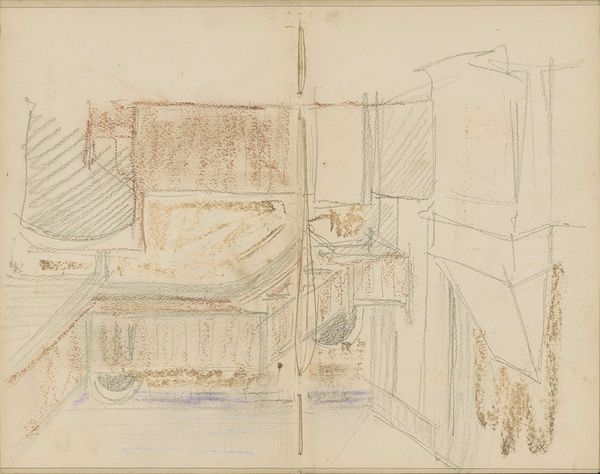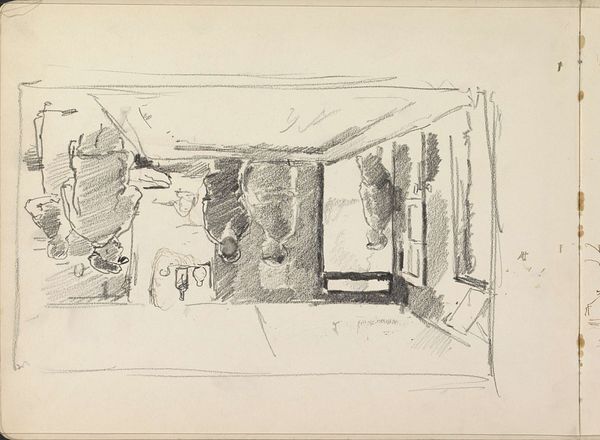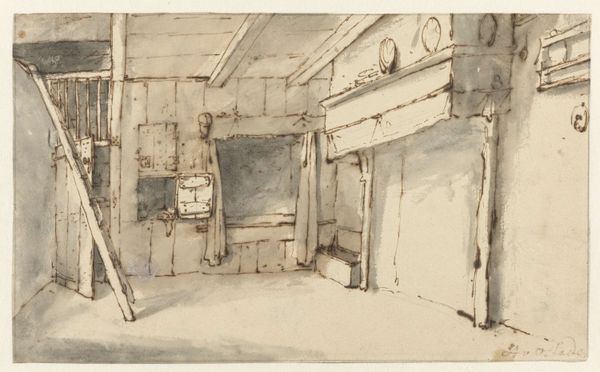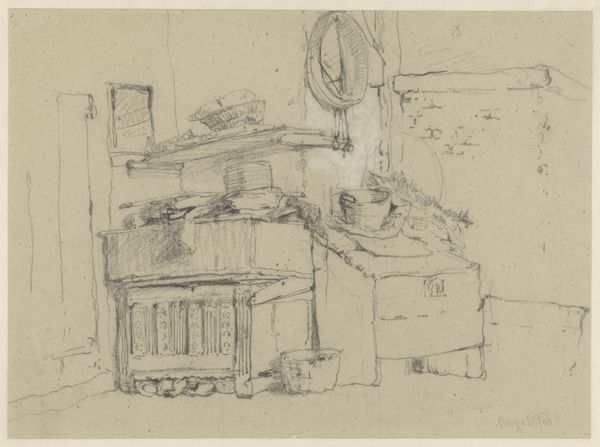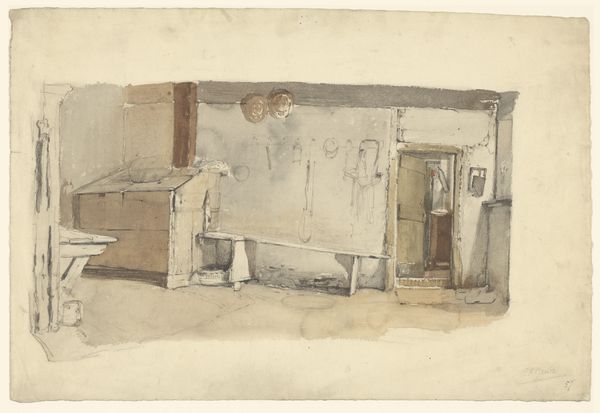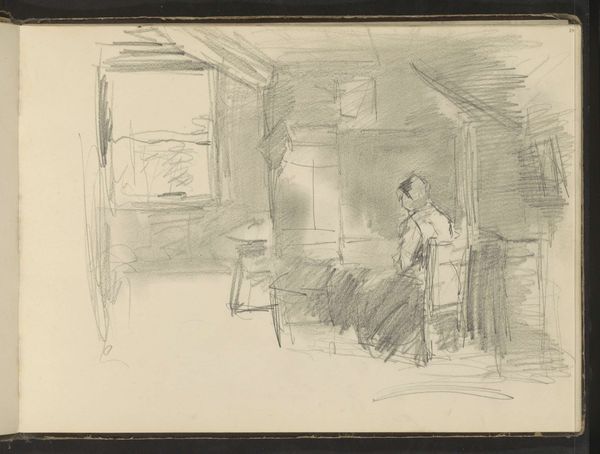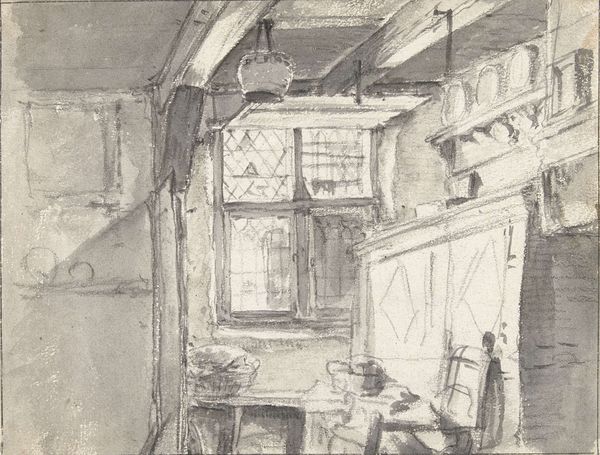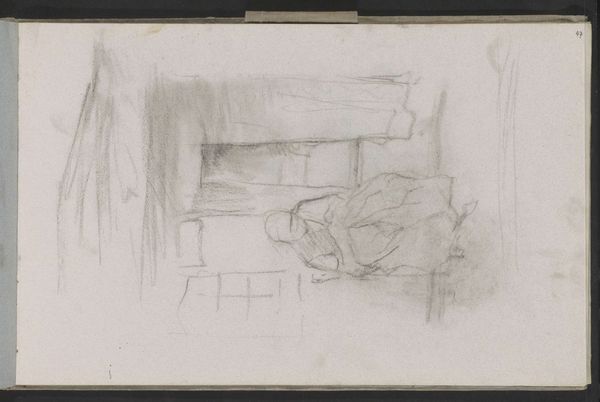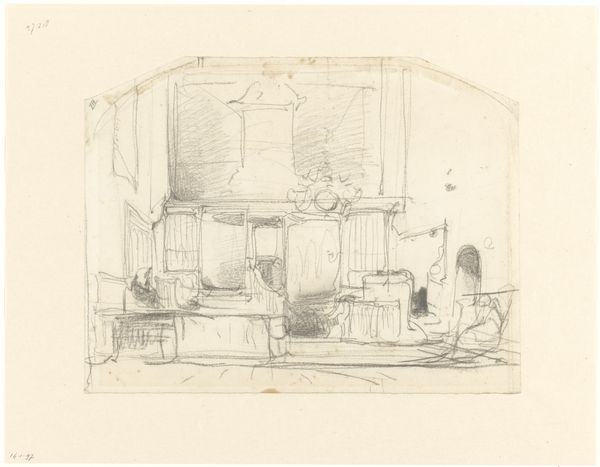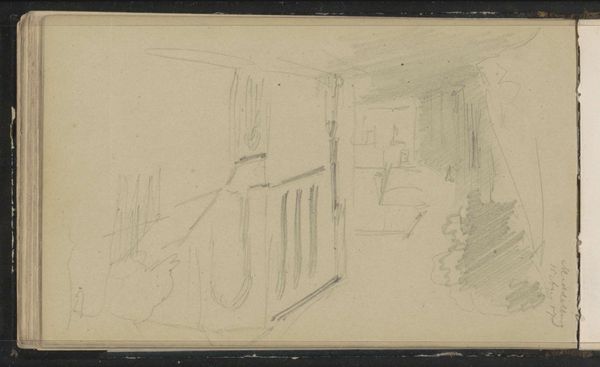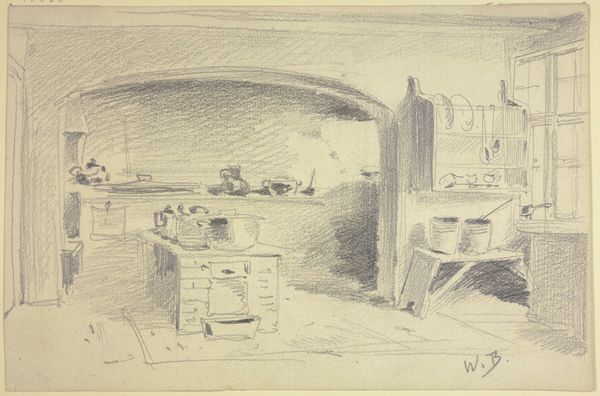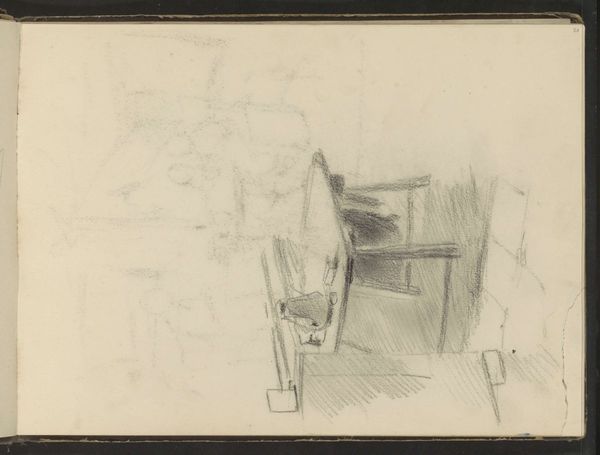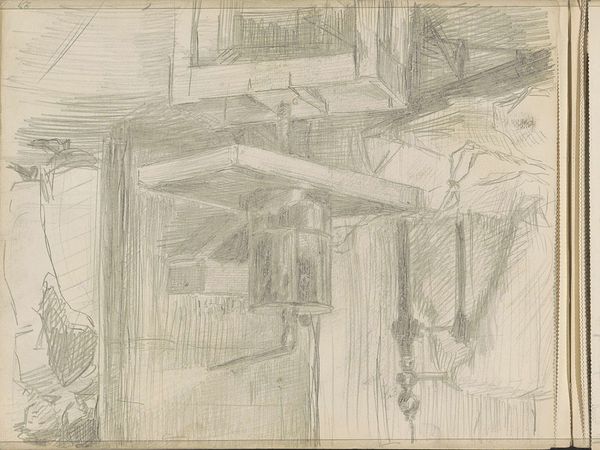
Interieur met een tafel en een schilderij boven een schouw 1827 - 1891
0:00
0:00
johannesbosboom
Rijksmuseum
Copyright: Rijks Museum: Open Domain
Curator: Welcome, everyone. We’re looking at "Interior with a Table and a Painting above a Mantelpiece" by Johannes Bosboom, thought to be created sometime between 1827 and 1891. Editor: My immediate impression is of a hazy memory, or perhaps a scene viewed through a veil. There’s a soft, dreamlike quality to the whole composition, created primarily by his very loose application of watercolour. Curator: Indeed. Observe how Bosboom employs broad strokes and washes to evoke the interior space. He’s more interested in capturing the essence of the scene than providing a detailed rendering. We can discuss how this ties into a broader historical trend. Interiors became increasingly important subject matter. Editor: Absolutely. One is instantly drawn to the interplay of light and shadow, which lends the room a certain depth despite the work's overall flatness. Notice, in particular, the subtle tonal variations he achieves using just a few colours and a minimal, sparse line to create definition. What I see here, for example, is less about verisimilitude and more about line, structure and its function in place-making, right? Curator: I'd certainly agree. These artistic explorations are often linked with wider political and social shifts of the time. As domestic settings became markers of social status, artworks like this provided access to private spaces, previously unseen in popular culture. Bosboom provides his own unique take, focusing instead on architectural simplicity. Editor: And this is achieved via masterful use of perspective – see how the lines converge, drawing your eye towards an almost vanishing point – this reinforces depth in an otherwise flat, graphic surface. Curator: Precisely! It's a statement about the changing relationship between the private and the public sphere during the 19th Century, a reflection on societal developments. This scene offers a space of intimate reflection during great social upheaval, which can explain the popularity of this painting at the time. Editor: Ultimately, this drawing prompts us to consider how simple forms and compositions can deliver deeper psychological states, while engaging directly with how it functions aesthetically as an artistic exercise of place. Curator: This analysis offers insights not only into the art but also into its place within history, revealing Bosboom's genius.
Comments
No comments
Be the first to comment and join the conversation on the ultimate creative platform.
